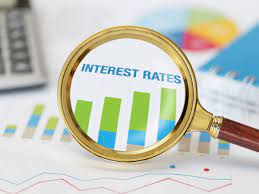In May last year, the Reserve Bank of Australia (RBA) lifted interest rates for the first time in over 11 years. This was something that many of the current generation had not experienced until then.
The decision to lift rates was made to counter increasing inflation – meaning costs were rising faster than wages. Mild inflation is actually a good thing and reflects a growing economy, but the current inflation rate is considered too high. The RBA targets consistent inflation of two to three percent whereas in Australia it’s currently running at around seven percent, caused by a perfect storm of factors including COVID impacts, a cashed-up workforce and supply issues from both natural and man-made disasters.
Tweaking interest rates is one of the few levers RBA can pull to control inflation. Their aim is to increase loan repayments, which in turn reduces the spending capacity of consumers, lowering demand and bringing down prices.
The cash rate in May 2022 was 0.1%. This is a base set by RBA to which banks then add their profit margin. At around that time a typical variable housing loan had an interest rate of around 2.5%. Since then RBA has progressively raised the cash rate to 3.1% (as at January 2023) which means variable rates are now more likely to sit around 5% for new loans and in the high fives for existing mortgages.
The increases came quicker than anyone expected across consecutive months and most homeowners have and will continue to find ways to adjust their spending to meet their rising loan repayments. Asking your bank or broker for a rate review is a worthwhile exercise that could help with this – you might be surprised at the result.
My big concern though is for borrowers that locked in fixed low interest rates, typically for a set term of two to three years. Some of these fixed rates were sub two percent, and many will mature in the coming year.
A $500,000 loan over a 20 year term with a fixed rate of 2% will have repayments of $2,529 per month. At the end of its fixed-term, that loan will revert to the Bank’s standard variable rate of the day. At 6%, those repayments will increase to $3,582. That’s an extra $1,053 per month, and I doubt we’ve seen the end of rate rises yet.
My advice is to start adjusting your repayments right now. For example, if your fixed term is due to mature eight months from now and your rate might increase by 4%, then up your repayments (or put the money aside if your fixed loan doesn’t allow extra repayments) to provide for an extra half percent across each of the next eight months (an extra $130 month on month in the example above). Your fixed rate loan product might not allow extra principal repayments. If this is the case then put the extra money aside in a separate bank account and apply it to the loan when the fixed term ends.
There’s a helpful mortgage calculator at moneysmart.gov.au that you can use to calculate the impact of rising interest rates on your loan repayments.
It’s far easier to plan for and cope with small regular adjustments to your spending than it is to find major savings come D-Day.
Related blog:
Barefoot Investor Principles
A Perfect Storm
Online software for managing personal finances
Author: Mark Douglas
Email: mark@faj.com.au

